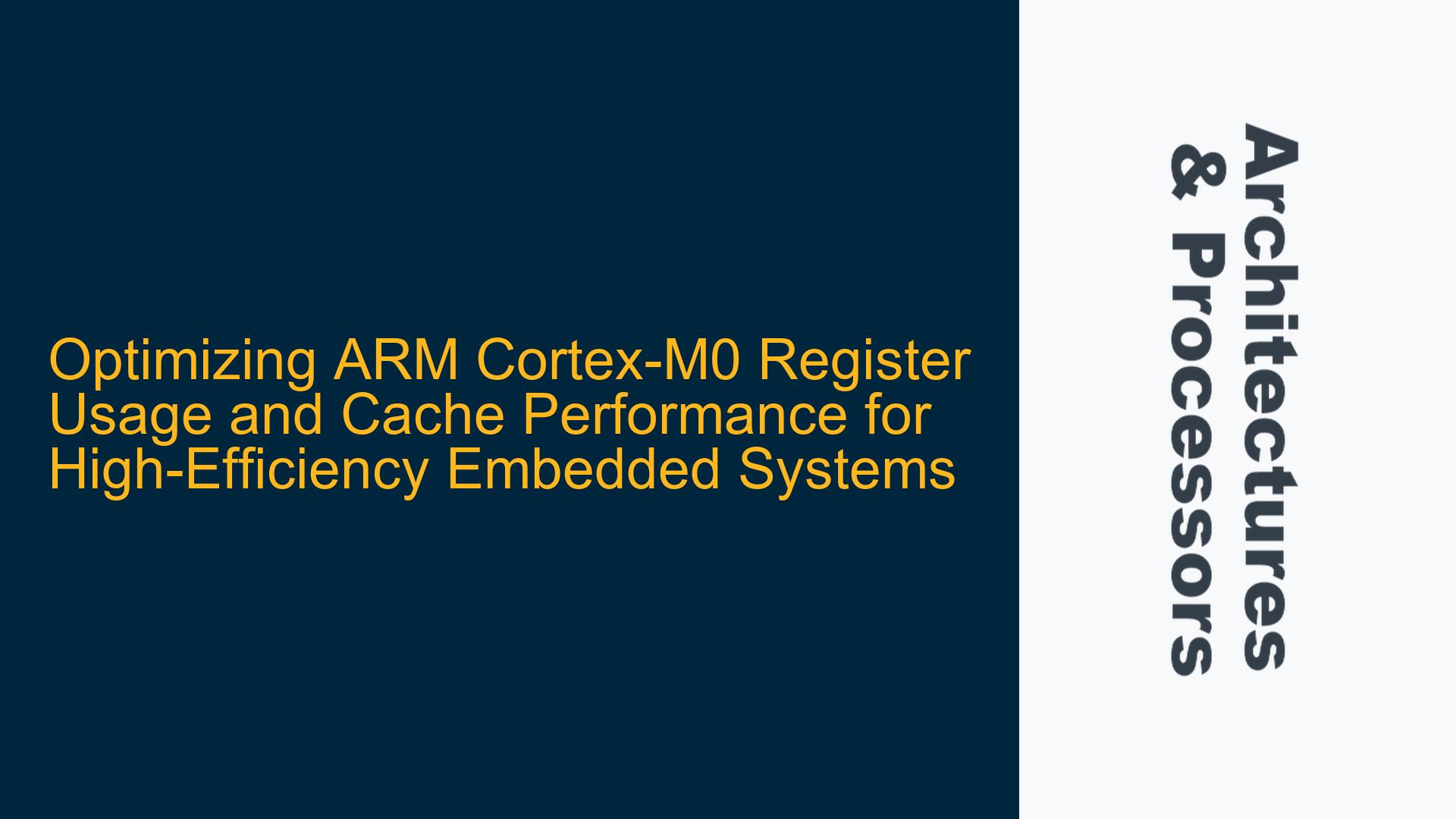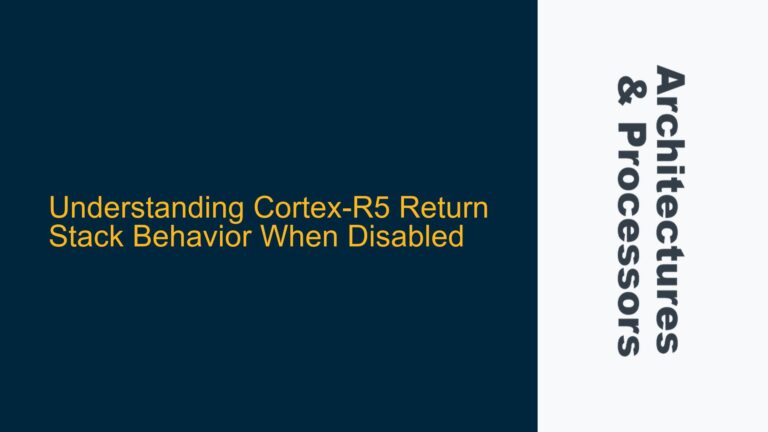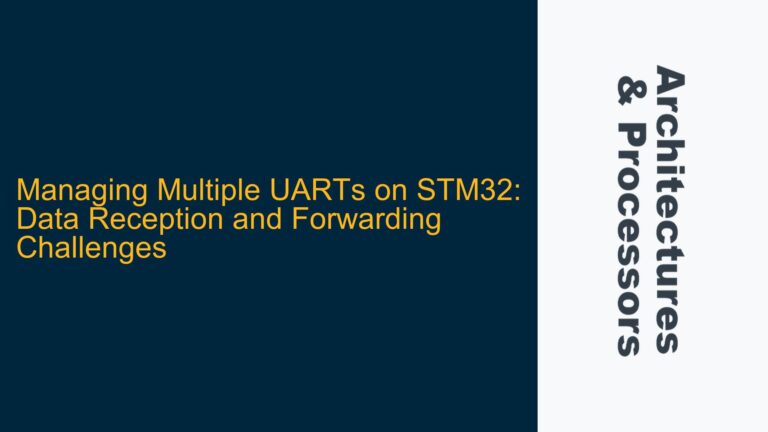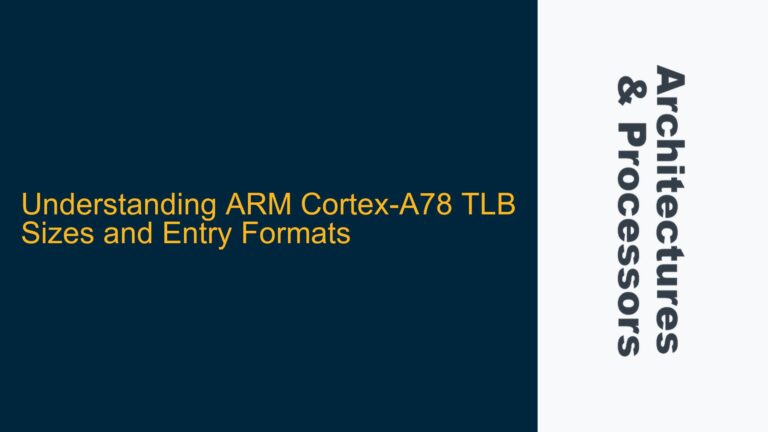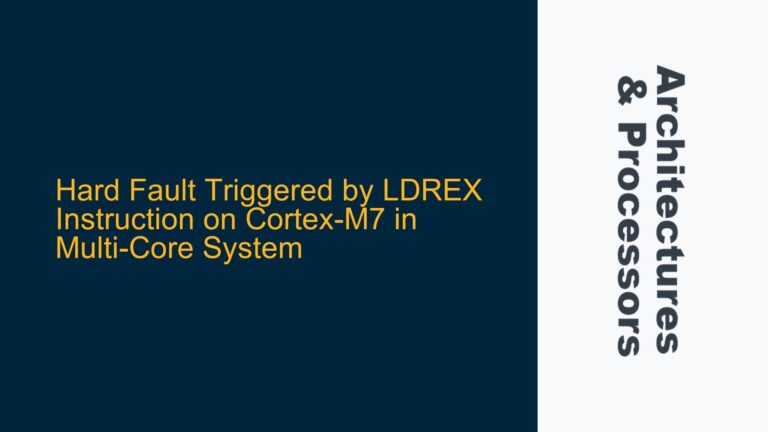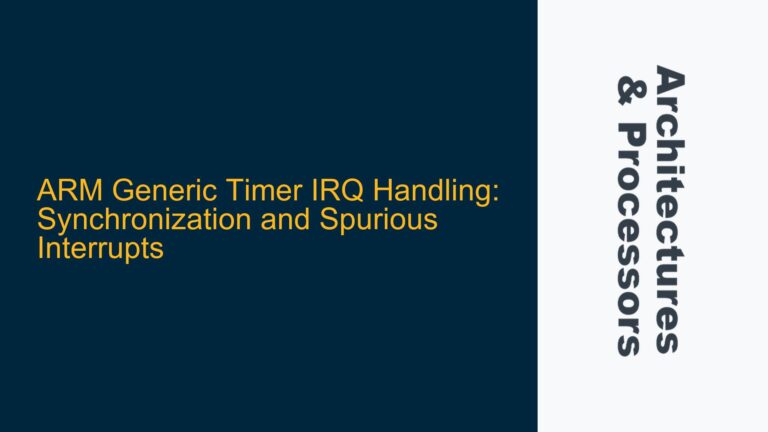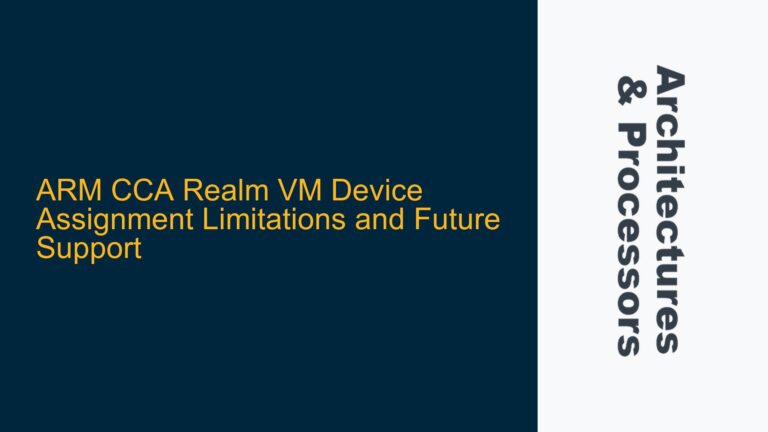ARM Cortex-M0 Register Utilization and Cache Behavior in Performance-Critical Applications
The ARM Cortex-M0 is a highly efficient, low-power processor designed for embedded systems. However, its limited register set and cache architecture can pose challenges for developers aiming to extract maximum performance, especially in performance-critical applications such as audio decoding (e.g., MP3) or real-time signal processing. This post delves into the intricacies of register usage, cache behavior, and DMA interactions on the Cortex-M0, providing detailed insights and optimization strategies to overcome these challenges.
Register Optimization Techniques for Cortex-M0 Subroutines
The Cortex-M0 features a limited set of 16 general-purpose registers (R0-R15), with some registers serving specific purposes such as the Stack Pointer (R13), Link Register (R14), and Program Counter (R15). Efficient utilization of these registers is critical for performance optimization, particularly in subroutines where register pressure is high.
R14 (LR) as a Temporary Register:
The Link Register (R14) is typically used to store the return address for subroutines. However, in performance-critical code, R14 can be temporarily repurposed as a general-purpose register if the subroutine does not make nested calls or invoke interrupts. By saving R14 to the stack at the beginning of the subroutine and restoring it before returning, developers can effectively gain an additional register for computation. This technique is particularly useful in tight loops or mathematical operations where every register counts.
R13 (SP) Storage in Memory:
The Stack Pointer (R13) can be stored in memory during subroutine execution, provided that no interrupts occur and the subroutine does not call other functions. This approach frees up R13 for use as a general-purpose register, but it requires careful management to avoid stack corruption. Developers must ensure that the stack pointer is restored before any function calls or interrupt service routines (ISRs) are executed.
R15 (PC) and Cache Considerations:
The Program Counter (R15) is typically not used as a general-purpose register due to its role in instruction fetching. However, in scenarios where code and data are fully cached, R15 can be leveraged to store temporary values. This is particularly useful when accessing small, frequently used data sets that fit within the cache. For example, a 16-bit value stored in R15 can be accessed without incurring the latency of a memory read, provided the cache ensures the data is readily available.
Special Registers and Read-Modify-Write (RMW) Operations:
The Cortex-M0 supports special registers such as APSR, IPSR, EPSR, and PRIMASK, which can be accessed using the MRS and MSR instructions. These instructions perform read-modify-write (RMW) operations in a single cycle, making them highly efficient for modifying control and status registers. Developers can exploit this behavior to optimize critical sections of code, such as interrupt masking or context switching.
Cache Behavior and DMA Interactions in Cortex-M0 Systems
The Cortex-M0 does not feature a traditional cache but relies on a tightly coupled memory (TCM) or flash memory with prefetch buffers to improve performance. Understanding the interaction between the CPU, memory, and DMA is crucial for optimizing data throughput and minimizing latency.
Cache and Flash Prefetch Behavior:
The Cortex-M0’s flash memory typically operates with a 1-cycle penalty for code execution, which can be mitigated by aligning data and instructions on 32-bit boundaries. This alignment ensures that the prefetch buffer can load two instructions simultaneously, reducing the impact of flash latency. Developers should structure their code to maximize the use of 32-bit aligned memory accesses, particularly in performance-critical loops.
DMA Priority and Bus Bandwidth Utilization:
Direct Memory Access (DMA) is a powerful tool for offloading data transfer tasks from the CPU. However, improper DMA configuration can lead to bus contention and reduced CPU performance. On the Cortex-M0, DMA channels can be configured with lower priority than the CPU, ensuring that the CPU retains access to the bus during critical operations. This configuration is particularly useful in applications such as audio processing, where the CPU must maintain real-time performance while handling data transfers.
Scratchpad Memory and Vector Table Relocation:
The Cortex-M0’s vector table is typically located at the start of memory (address 0x00000000). However, relocating the vector table to a higher address (e.g., 0x00000400) can free up the lower 1KB of memory for use as a scratchpad. This scratchpad can be accessed using 8-bit, 16-bit, or 32-bit operations, providing a high-speed memory region for frequently accessed data. Developers can overlay lookup tables or temporary variables in this region to minimize memory access latency.
Advanced Optimization Strategies for Cortex-M0
Beyond basic register and cache optimizations, several advanced techniques can further enhance the performance of Cortex-M0-based systems.
Instruction Scheduling and Pipeline Utilization:
The Cortex-M0 features a 3-stage pipeline, which can be optimized by carefully scheduling instructions to avoid pipeline stalls. For example, placing memory access instructions on 32-bit boundaries ensures that the prefetch buffer can load two instructions simultaneously, reducing the likelihood of pipeline bubbles. Developers should also avoid back-to-back memory accesses that target the same memory bank, as this can lead to bus contention and increased latency.
Efficient Use of High and Low Registers:
The Cortex-M0’s Thumb instruction set provides efficient access to low registers (R0-R7) but imposes additional overhead for high registers (R8-R12). Developers should prioritize the use of low registers for frequently accessed variables and reserve high registers for less critical tasks. This approach minimizes instruction encoding overhead and improves code density.
Custom Assembly Routines for Mathematical Operations:
The Cortex-M0 lacks hardware support for advanced mathematical operations such as 64-bit multiplication or division. However, custom assembly routines can significantly outperform compiler-generated code for these operations. For example, a hand-optimized 32-bit x 32-bit multiply routine can achieve a 17-cycle execution time, compared to 23 cycles for compiler-generated code. Developers should profile their applications to identify performance bottlenecks and replace critical sections with custom assembly routines where necessary.
Exploiting Peripheral Features for Performance Gains:
Modern Cortex-M0-based microcontrollers often include specialized peripherals such as hardware dividers, interpolators, and programmable I/O (PIO) blocks. These peripherals can offload computationally intensive tasks from the CPU, freeing up cycles for other operations. For example, the RP2040 microcontroller features PIO FIFOs that can be used as scratchpad memory, reducing the need for frequent memory accesses. Developers should explore the capabilities of their target hardware and leverage these features to optimize performance.
Conclusion
Optimizing performance on the ARM Cortex-M0 requires a deep understanding of its register set, cache behavior, and DMA interactions. By carefully managing register usage, aligning memory accesses, and leveraging advanced optimization techniques, developers can extract maximum performance from this versatile processor. Whether implementing a fixed-point MP3 decoder or a real-time control system, these strategies provide a solid foundation for achieving high-efficiency embedded systems.
